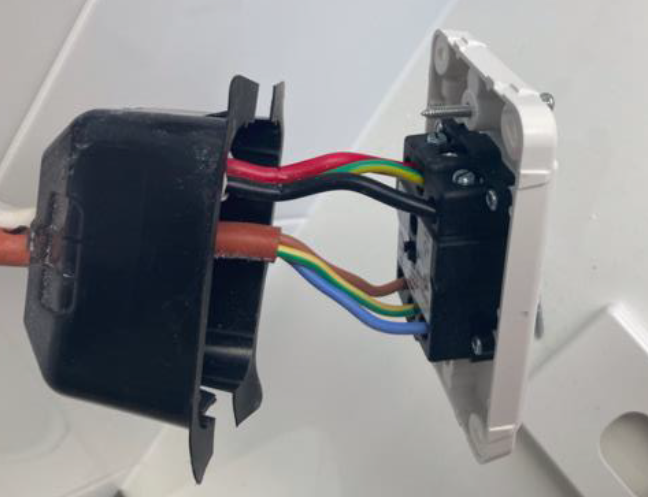Electric cooking appliances and their isolation devices
Recently an electrical practitioner received an infringement notice from CBOS for:
- Failing to connect the isolation switch for a range correctly, meaning that the range was not earthed; and
- Failing to test the installation after energising their work, meaning the issue was not identified prior to putting the installation into service.
The practitioner and apprentice were doing the electrical fit out for a kitchen renovation. At the completion of the work the range was energised.
The TechSafe inspector who later inspected the work found that the range was not earthed.
The line earthing conductor for the range isolation switch was connected into the loop terminal of the isolation switch. The load earth conductor was connected into the earth terminal of the isolation switch. However, both were isolated from each other.
The electrical practitioner did not complete required testing of the range to ensure it was connected to the earthing system. Therefore the above issue was not identified, and the range was left not earthed. If a fault had occurred the range would have become live.
As a result, CBOS investigated the matter and issued the electrical practitioner with an infringement notice.
Australian Standard AS/NZS 3000:2018 (the Wiring Rules) Section 8 explains all of the minimum requirements for testing. You should also refer to the manufacturer’s installation instructions for isolation switches for information about the connection layout and the correct connection sequence.
A photo of the relevant isolation switch is below:

Electrical Safety Bill consultation period closed
CBOS would like to thank anyone who provided a submission relating to the new Electrical Safety Bill 2020.
The Tasmanian Government is reforming and consolidating electrical safety laws, which have not been updated since the 1990s. The Bill consolidates the electricity safety laws, reduces duplication and improves flexibility in adopting and managing new electrical technologies as they develop.
We are pleased with the positive commitment to improving electricity safety in the state, as a number of well-considered and valued submissions have been received.
You can review the submissions on the Department of Justice website.
ESS Hazard Alerts
Electrical Standards and Safety have produced the following Hazard Alerts which relate to particular safety concerns and risks raised about electrical products and practices.
| Hazard Alert Title | Summary |
|---|---|
Hazard Alert - 100A Michaud Service Fuse Holders - TasNetworks Published June 2023 | Hazard alert regarding 100A Michaud Service Fuse Holders. TasNetworks has become aware of a defect in 100A Michaud Service Fuse Holders at the consumer’s point-of-attachment (POA). While the defective fuse holders do not impact the supply or operation of electrical circuits it can pose a risk to those working in close proximity. |
Hazard Alert - LG battery recall (PDF, 136.9 KB) Published June 2022 | Hazard alert regarding LG energy storage systems and ESS batteries or a SolaX X-Cabinet, Power Station or Opal Storage system containing a recalled battery. |
Hazard Alert - Explosion and fire risk associated with battery adaptors (PDF, 232.5 KB) Published March 2022 | Hazard alert regarding the use of adaptors to allow after-market generic batteries to fit different products, particularly battery |
Hazard Alert 4 - Fire risk with dryers - spontaneous combustion (PDF, 372.9 KB) Published December 2020 | Warning on the use of both commercial and domestic tumble dryers to dry items exposed to cooking fats and other oils which can result in a fire. |
| Hazard Alert 3 - Detrimental effects on flued appliances when installing mechanical ventilation (exhaust fans) (PDF, 220.9 KB) Published October 2020 | Warning on the impact on the safe operation of open flued gas space heaters when installing or replacing kitchen range hoods and bathroom exhaust fans. |
Hazard Alert 2 - Cable insulation (PDF, 324.9 KB) Published June 2020 | Warning on the hazards when cable insulation deteriorates resulting in increased risk of electric shock, arcing and fire. |
Hazard Alert 1 - Polarity sensitive RCBO devices(PDF, 194.2 KB) Published July 2018 | Warning on hazards when RCBO devices are incorrectly wired and may not operate when leakage current is present |
Selected Electrical Recall Alerts
Electrical Standards and Safety draws your attention to the following recalls, the full list of all recalls is at recalls.gov.au. The ACCC website has additional information.
| Recall Title | Summary |
|---|---|
LG Battery Energy Storage System - Recall | Battery storage installed in conjunction with solar systems. Recalled due to a defect that may result in batteries overheating and catching fire. This recall applies to particular models and serial numbers. For further information and to check if your system is affected visit the Australian Competition and Consumer Commission |
ESS Compliance Guides
Electrical Standards and Safety have produced the following Compliance Guides which provide an explanation of technical requirements most often contained with a Standard.
| Compliance Guide Title | Summary |
|---|---|
CBOS Electrical Compliance Guide - DC Solar Cables (PDF, 128.3 KB) Published: May 2022 | Explains installation requirements for photovoltaic (PV) DC cables from June 2022. |
Advisory Note 5 - Reporting unsafe electrical installations (PDF, 219.6 KB) Published: July 2021 | Explains the reporting requirements when an electrician finds an unsafe electrical installation. |
Published: November 2020 | Explains the safety requirements to use the same DC connectors (type and manufacture) within photovoltaic (pv) solar installations |
Electrical Advisory Note 1 - DC Isolator installation (PDF, 753.9 KB) Published: October 2019 | Covers changes to AS/NZS 5033:2014 Installation and safety requirements for photovoltaic (PV) arrays and DC isolator protection from environmental effects. The amendment came into effect on 29 June 2019. |
This page has been produced and published by the Consumer Building and Occupational Services Division of the Department of Justice. Although every care has been taken in production, no responsibility is accepted for the accuracy, completeness, or relevance to the user's purpose of the information. Those using it for whatever purpose are advised to verify it with the relevant government department, local government body or other source and to obtain any appropriate professional advice. The Crown, its officers, employees and agents do not accept liability however arising, including liability for negligence, for any loss resulting from the use of or reliance upon the information and/or reliance on its availability at any time.

